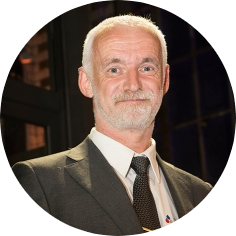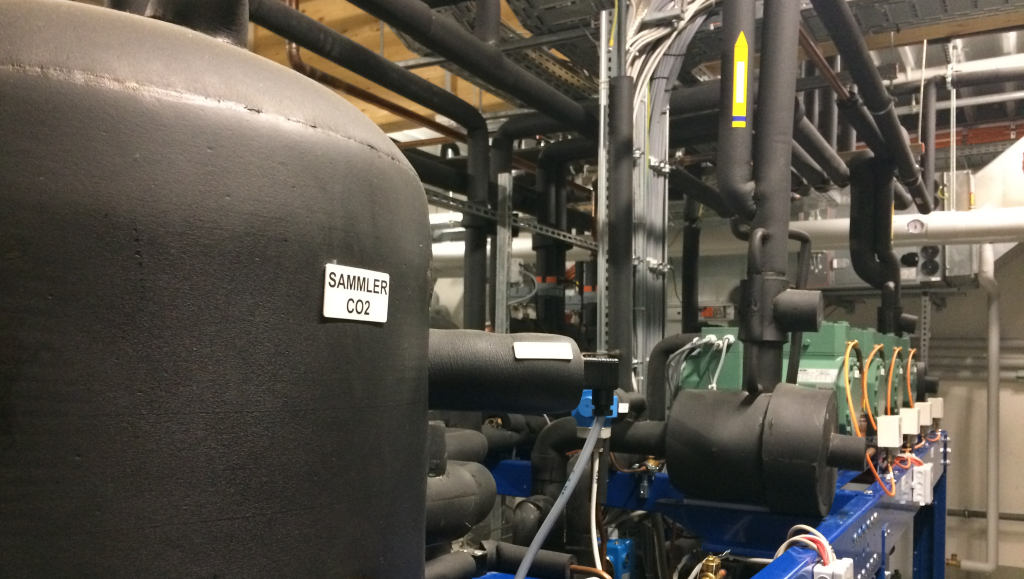The CO2 Revolution: Commercial Refrigeration Trends Reshaping EU and US Markets
Carbon dioxide (CO2, R744) is transforming commercial refrigeration across major markets, emerging as a future-proof solution for retailers navigating tightening regulations and mounting environmental pressures. With the EU setting aggressive phase-out timelines and individual US states implementing stringent requirements, momentum behind CO2 adoption has reached a critical tipping point. What is driving this shift across these two influential markets?
Market Momentum Across Regions
The adoption of transcritical CO2 systems has been accelerating globally, especially in the commercial refrigeration sector. According to the 2024 ATMOsphere Natural Refrigerants: State of the Industry market report, Europe now boasts approximately 90,700 food retail stores using transcritical CO2 systems (as of December 2024), representing a market penetration of 30%, up from 22.9% in 2023. This remarkable growth encompasses 76,200 stores with centralized systems and 14,500 with condensing units.
North America, while starting from a smaller base, is also experiencing explosive growth. The region saw installations increase by 40% to 4,100 stores in 2024, with 2,800 in the US and 1,300 in Canada. Market penetration in North American supermarkets and grocery stores reached 5.8%, compared to 4.1% the year prior, according to ATMOsphere’s report.
Industry Trends & Shifting Market Dynamics
The commercial refrigeration landscape in the EU and the US is evolving rapidly as stakeholders adapt to regulatory pressures and market opportunities. What are some key trends that can be identified?
- Distributed CO2 Systems Gain Traction

Andre Patenaude, Director of Solutions Strategy at Copeland, has noticed a significant evolution in system architectures. Centralized CO2 booster systems have traditionally been the primary choice in the US. But recently, distributed CO2 architectures have emerged as a viable option. “These smaller-capacity systems add flexibility to the CO2 equation, making them ideal for smaller-format stores or larger stores seeking the scalability advantages of a distributed approach," according to Patenaude.
The adoption of distributed CO2 systems is already widespread in Europe, with many EU-based manufacturers establishing production facilities in the US, indicating the trend's growing momentum.
- US Market Transition Strategies

The US market is catching up rapidly despite a late start. Giacomo Pisano, Sales Manager at Dorin, notes the geographic disparities: "The US is far behind Europe in terms of CO2 deployment, but the growth pace is really fast in some areas, especially in jurisdictions where strong regulations are in place, such as California, where CO2 is becoming a mainstream solution for supermarket and industrial refrigeration."

This rapid growth reflects a pragmatic, multi-faceted approach to natural refrigerant adoption. According to Wynand Groenewald, President of Future Green Now, the US market seems to be focusing on charge reduction strategies to mitigate the amount of HFC refrigerant used. He has noticed a lot of companies introducing secondary CO2 systems on existing HFC-based systems to reduce refrigerant charges in existing stores.
Groenewald has noticed a great mindset shift in the US with a drive towards training. "The mindset is definitely changing from 'must we’ or ‘should we,' to 'we are and we need to improve,'" he says.
- Heat Recovery Opportunities Expand
CO2's unique thermodynamic properties make it particularly well-suited for heat recovery applications, as the refrigerant naturally operates at higher temperatures compared to conventional refrigerants. This characteristic enables more efficient heat transfer and higher-grade waste heat recovery.
Patenaude explains that heat reclaim in CO2 systems has become increasingly popular, providing opportunities to maximize sustainability potential. Instead of releasing heat outdoors, it is captured and utilized for various purposes throughout a facility, including hot water production, dehumidification, slab heating, pre-heating refrigeration processes, or even space heating.
- Technological Innovations Drive Market Expansion
Manufacturers are investing heavily in research and development (R&D) to address traditional CO2 system limitations while expanding the technology's accessibility across market segments. Much of this innovation focuses on compressor technology, where advances are enabling both larger-scale applications and smaller-format deployments.

Marco Perri, R&D Manager and Environmental System Manager at Frascold, notes that there is interest in bigger compressors with higher capacities in the refrigeration sector, while small units are also becoming interesting, especially single compressors that can operate simultaneously in subcritical and transcritical modes.
Manufacturers are responding with comprehensive R&D programs spanning the capacity spectrum. Frascold has invested in developing new CO2 compressor sizes across multiple ranges, while Dorin has focused particularly on smaller capacity units. Meanwhile, Copeland's upcoming transcritical scroll compressor featuring dynamic vapor injection technology promises enhanced simplicity, efficiency, and performance for distributed CO2 systems, eliminating the need for parallel compression strategies.
These technological advances are systematically addressing cost barriers across applications, expanding CO2's viability well beyond traditional refrigeration. As the technology matures, CO2 is now spreading into heat pumps, chillers, and even air-conditioning, thanks to innovations like Daikin's new CO2 VRV system.
EU Regulations: Comprehensive Phase-Out Framework
The EU has established the world's most ambitious regulatory framework for eliminating fluorinated gases (f-gases). The revised EU F-gas Regulation became law on March 11, 2024, setting a complete ban on f-gases by 2050. This has been very influential in driving the shift toward natural refrigerant solutions like CO2.
Key Milestones:
-
2025: Ban on new self-contained refrigeration equipment using refrigerants with a Global Warming Potential (GWP) ≥150
-
2027: Chillers up to 12kW capacity prohibited from using f-gases with GWP ≥150; larger chillers limited to GWP ≤750
-
2030: Commercial refrigeration equipment (except certain chillers) banned from using f-gases with GWP ≥150
-
2032: Complete ban on fluorinated refrigerants in all chillers up to 12kW capacity
-
2050: Total phase-out of f-gases
The regulation also establishes training requirements for technicians working with natural refrigerants, mandating member states to develop certification programs within one year.
The EU regulation explicitly links f-gases to PFAS (per- and polyfluorinated substances), stating that some fluorinated greenhouse gases "are proven to or suspected to degrade into PFAS."
This connection is particularly significant for newer HFO refrigerants, which can break down into trifluoroacetic acid (TFA), a PFAS compound that persists in the environment. The European Chemicals Agency (ECHA) is now considering a universal PFAS restriction that could accelerate the timeline for natural refrigerant adoption.
US Regulations: Federal Framework with State Leadership
The US operates under the federal American Innovation and Manufacturing (AIM) Act, enacted in 2020, which authorizes the EPA to phase down HFC production and manage substitutes. Going beyond this mandated schedule, some individual states are implementing even more progressive timelines.
Federal AIM Act Framework
The Technology Transitions Rule, finalized in October 2023, targets the phase-down of high-GWP HFCs with a series of rolling restrictions. Refrigerants above 150 GWP are banned in many refrigeration applications starting January 1, 2025. Additional compliance deadlines extend through 2028, creating a phased approach to HFC elimination.
State-Level Legislation
New York State finalized ambitious HFC regulations in December 2024, notably using 20-year GWP limits rather than the more traditional 100-year measurements. The 20-year GWP measurement captures the more immediate warming impact of refrigerants compared to the 100-year timeframe, making regulations more stringent since many HFCs have disproportionately higher warming effects in their first two decades.
Key provisions include:
-
Supermarket systems with a refrigerant charge capacity of 50lbs (23kg) or greater: GWP20 > 580 banned January 1, 2026; GWP20 > 10 banned January 1, 2034
-
Supermarket systems with a refrigerant charge capacity less than 50lbs (23kg): GWP20 > 943 banned January 1, 2026; GWP20 > 10 banned January 1, 2034
-
Stand-alone commercial units: GWP100 ≥150 banned January 1, 2025; GWP20 > 10 banned January 1, 2034.
Washington State implemented regulations restricting GWP >150 refrigerants in new commercial and industrial equipment starting in 2025, with retrofit bans following in 2029.
California: The California Air Resources Board (CARB) opened submissions for the second round of funding under its F-gas Reduction Incentive Program (FRIP) for commercial and industrial refrigeration in 2024. A total of $65 million has been allocated to the program.
Regulatory Uncertainty Under New Administration

The 2025 Presidential Transition Project (Project 2025) recommends repealing "unnecessarily stringent and costly" HFC regulations under the AIM Act. However, Christina Starr from the Environmental Investigation Agency (EIA) in the US hasn’t seen any notable change in the market due to the political transition. “Some of the regulations are being revisited, but the HFC phasedown as a whole, and the declining supply of HFC refrigerants, is not expected to change. Those are the big drivers, and the market is still moving in the direction of lower-GWP and natural refrigerants.”
State-level commitments also remain strong, with the US Climate Alliance (representing 24 states) pledging continued climate action regardless of federal policy changes. “I think more and more states will be looking at replicating incentive programs for replacing the existing systems, similar to the California FRIP Program,” Starr predicts.
Addressing Market Barriers
Despite the strong regulatory drivers and technological advances, the transition to CO2 refrigeration faces several persistent challenges that vary by region and market segment. Understanding these barriers is crucial for stakeholders developing strategies to accelerate adoption and ensure the successful implementation of natural refrigerant systems.
- Economic Barriers
Patenaude explains that the higher initial cost of a CO2 system remains a challenge for the industry to overcome. However, long-term total cost of ownership (TCO) calculations and Scope 1 emissions reductions are favorable for a well-maintained CO2 refrigeration system.

Cost is especially challenging for large retailers with many stores, where the capital required to convert every single store to CO2 is enormous, explains Oliver Javerschek, Project Manager at BITZER. “It can only happen step-by-step.”
Pisano agrees that initial cost remains a barrier, particularly for smaller installations. "Smaller point of sale units below 40kW capacity are still not moving 100% with CO2 due to larger price gaps compared to synthetic refrigerant technologies, but this is changing recently due to more concerns about PFAS from end users," he says. Dorin has also recently introduced a smaller compressor range (the CD0 range) to help reduce this gap sensibly.
Starr emphasizes the need for economic support: "There is a significant capital investment required from the end user to replace the installed stock of refrigeration equipment, rather than make a more short-sighted decision to retrofit to a fluorinated alternative... So, what we need to accelerate the transition are more financial incentives for end users to replace all or part of their existing systems with non-fluorinated alternatives."
- Training and Skills Development
The shortage of trained technicians remains a significant barrier across all regions, with industry experts identifying this as a fundamental constraint to CO2 adoption. "I consider training and education of field technicians/service engineers as one main barrier to the introduction of CO2," says Javerschek.
Patenaude reinforces this view, noting that while technician shortages persist across all refrigeration technologies, "the relative novelty of CO2 and its perceived complexity contribute to the challenge." He emphasizes that retailers with access to well-trained technician workforces are better equipped to overcome reservations about transitioning to CO2, ensuring system reliability while reducing maintenance and operational costs.
The challenge is particularly acute in the US, where geographic scale compounds the problem. Groenewald explains that skills and knowledge are spread thin across the country, with few technicians truly capable of working on or commissioning CO2 systems. This shortage creates capacity bottlenecks as original equipment manufacturers (OEMs) take on commissioning work themselves. "However, they can't be everywhere or keep up with the demand, so both high demand and the lack of skilled technicians are major problems," Groenewald notes.
- Manufacturing & Market Development Considerations
Manufacturing capacity presents another constraint. Pisano identifies this as a key market limitation, particularly in the US. "The main barrier is a lack of manufacturing capability – there are not enough OEMs to fulfill the actual market requirements," he explains.

The need for production scale-up extends beyond individual manufacturers. According to Menno van der Hoff from Triple Aqua Consulting, "The main development needed is to upscale production of components so the price is lower.”
Industry Drivers: Beyond Compliance
While regulatory frameworks provide the foundation for market transformation, the momentum behind CO2 adoption extends far beyond mere compliance. A complex interplay of economic, strategic, and sustainability factors is creating powerful incentives for businesses to embrace natural refrigerants, often driving adoption faster than regulations alone could achieve.
- Regulatory Pressure Meets Business Strategy
Refrigerant regulations supporting the global phasedown of high-GWP HFC refrigerants remain the primary driver for CO2 adoption globally. "Despite the current regulatory uncertainty in the US, companies are moving forward with urgency, advancing their refrigerant transitions in line with their stated ESG [Environmental, Social, and Governance] targets," explains Patenaude.
However, the appeal of CO2 extends beyond regulatory compliance to encompass long-term business strategy. "The regulatory landscape is uncertain, and choosing a refrigeration strategy that is insulated from future mandates is a primary reason many are examining CO2 more closely," Patenaude notes.
- Corporate Leadership and Competitive Dynamics
Major retailers are driving adoption of CO2 through voluntary commitments that often exceed regulatory requirements. For instance, corporate players like Walmart are choosing transcritical CO2 as one of their primary technology options for meeting environmental and sustainability goals, while ALDI has committed to installing only natural refrigerants in all new and retrofit systems by 2035 – a timeline that extends across their entire footprint regardless of local regulations.
"The AIM Act regulations are playing a significant role in influencing this, as are these companies' own GHG [Greenhouse Gas] emission reduction targets," explains Starr. These initiatives reflect broader strategies to reduce Scope 1 emissions and meet ESG targets.
Conclusion: Momentum Builds Across Sectors
The commercial refrigeration sector stands at a turning point where regulatory pressure, corporate sustainability commitments, and technological innovation are converging to drive unprecedented adoption of CO2 systems in both the EU and US markets. While challenges remain around technician training, initial costs, and manufacturing capacity, the trajectory is evident: natural refrigerants, led by CO2, represent the future of commercial refrigeration.
The contrast between regions is striking yet complementary – Europe's aggressive regulatory timeline provides a roadmap for comprehensive transition, while innovative state-level policies in the US demonstrate how targeted incentives can accelerate adoption even amid federal uncertainty. Engineering advances continue to address traditional barriers, making CO2 systems more accessible across diverse market segments from large supermarket chains to smaller retail formats.
With market penetration rates climbing rapidly – 30% in Europe and 5.8% in North America – and applications expanding beyond traditional refrigeration into heat pumps and air conditioning, CO2 has moved from niche technology to mainstream solution.
The stage is set for continued expansion throughout the decade, driven by the powerful combination of regulatory certainty, corporate leadership, and technological maturation that makes CO2 the strategic choice for forward-thinking retailers.
**For real-world CO2 case studies and more technology trends, read Refrigeration Industry’s CO2 Refrigeration Special Edition. Subscribe for free:
